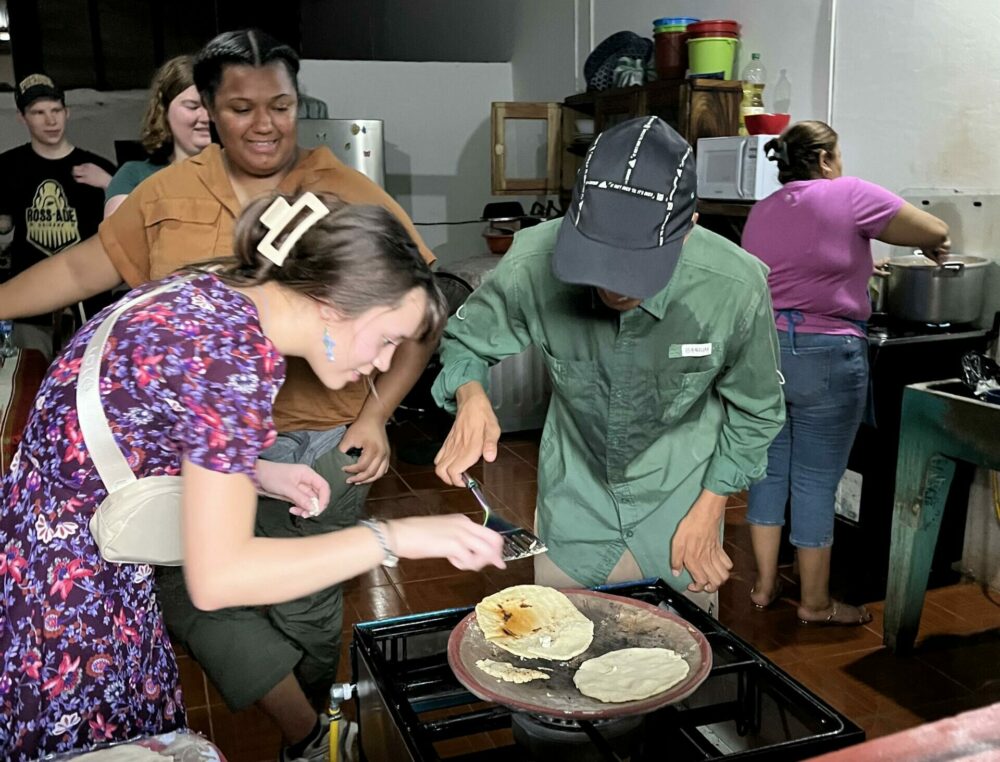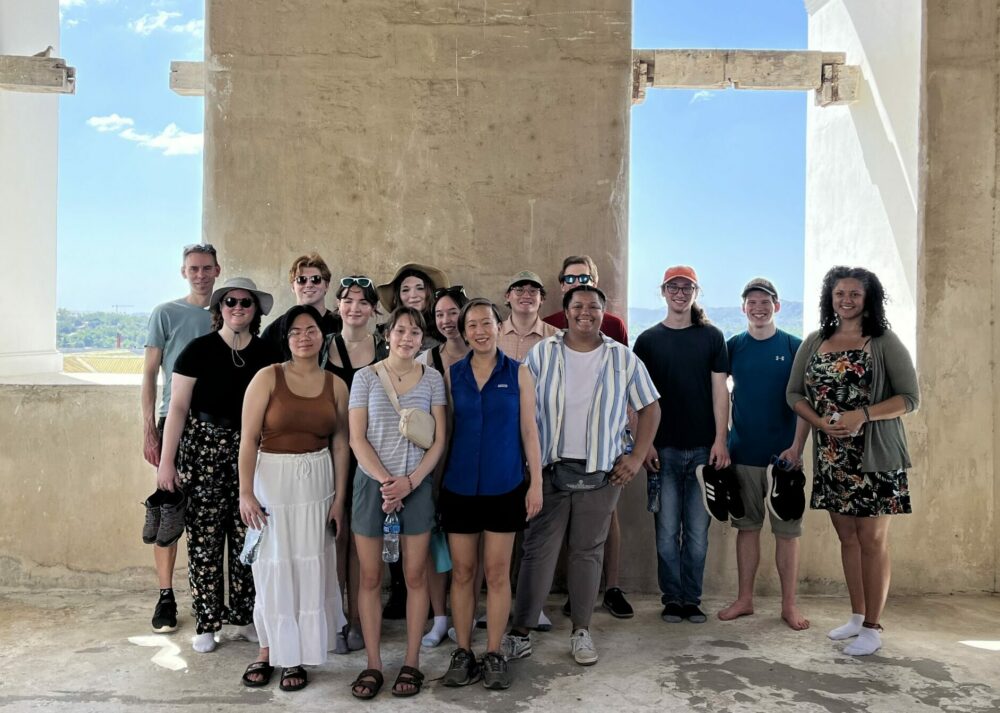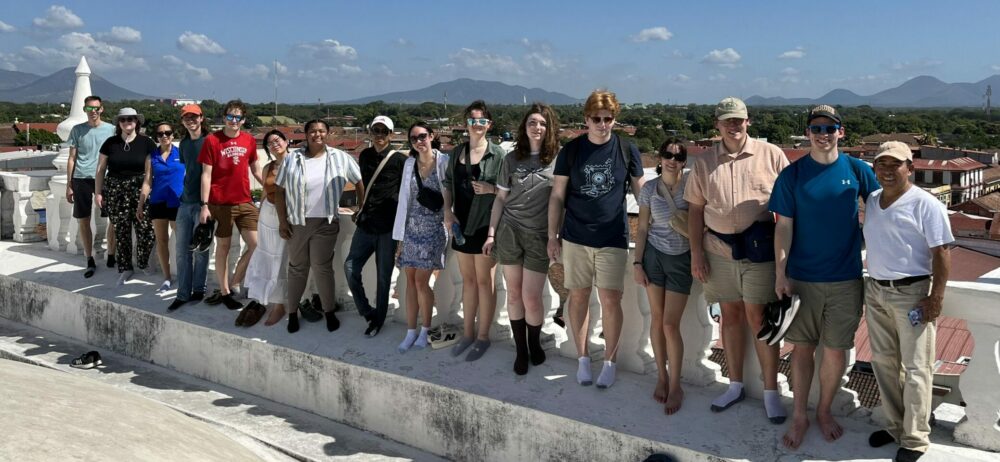Sophie is a high school junior in the STEM Academy at Madison College. Stepping out…
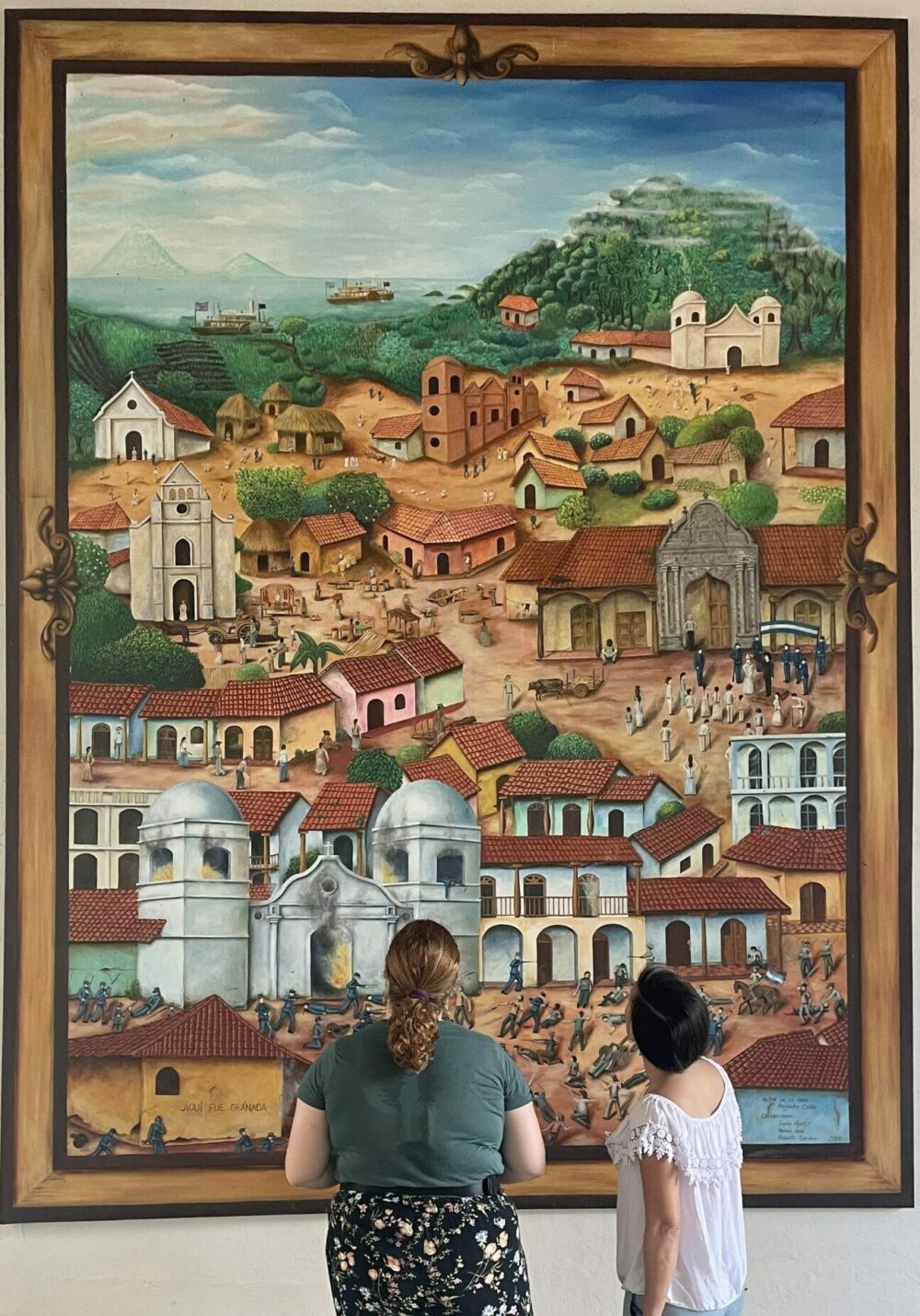
BWAP 2024: Murals in Nicaragua ~ Kyle Digman
Kyle is in his second year pursuing a degree in Biology and Global Health.
People who have known me for a long time know that I am not always the most interested in art. Visual art has never been a strong suit of mine, and there were many occasions where I have sat at the end of an art exhibit waiting for everyone else to be done looking, and learning. This is why it is such a surprise to me that I want to talk about what I learned from the art and murals we saw in Nicaragua.
When I think of the whole trip, all the experiences, and the things I saw and learned, many of them can be encapsulated in the art we saw. Léon had many of the pieces we saw on this trip. Most of these show and highlight different parts of Nicaragua’s history. It gave me things to think about and themes that were central to a larger national identity.
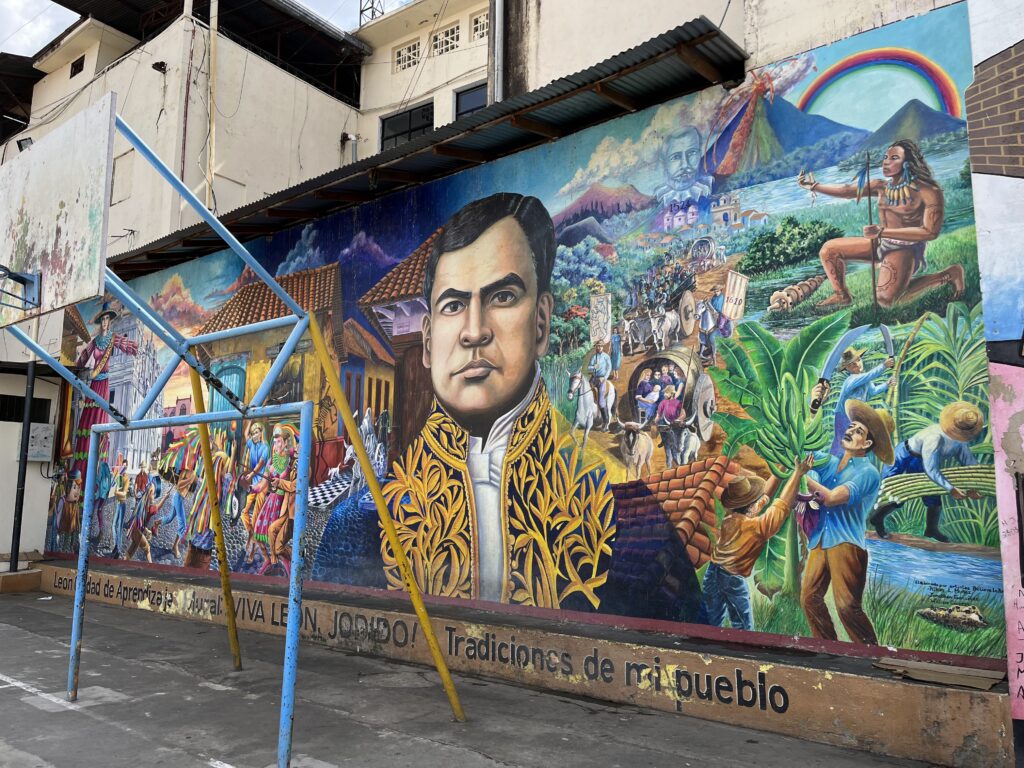
This first piece was recently created and covered up an old mural, which depicted other notable figures of Nicaragua, which at this point is not the narrative the government wants to put forward. The one that is there now highlights Rubén Darío as a center point. He was a famous Nicaraguan poet and ambassador. To the right of him is a depiction of colonization at the hands of the Spanish. It also includes many cultural elements including the dresses and common legends of Nicaragua to the left of Darío.
The first lines of the poem are what follows:
“It is with the voice of the Bible, or verse of Walt Whitman,
that we should reach you, Hunter!
Primitive and modern, simple and complicated,
with a bit of Washington and a bit of Nimrod.
You are the United States,
You are the future invader”
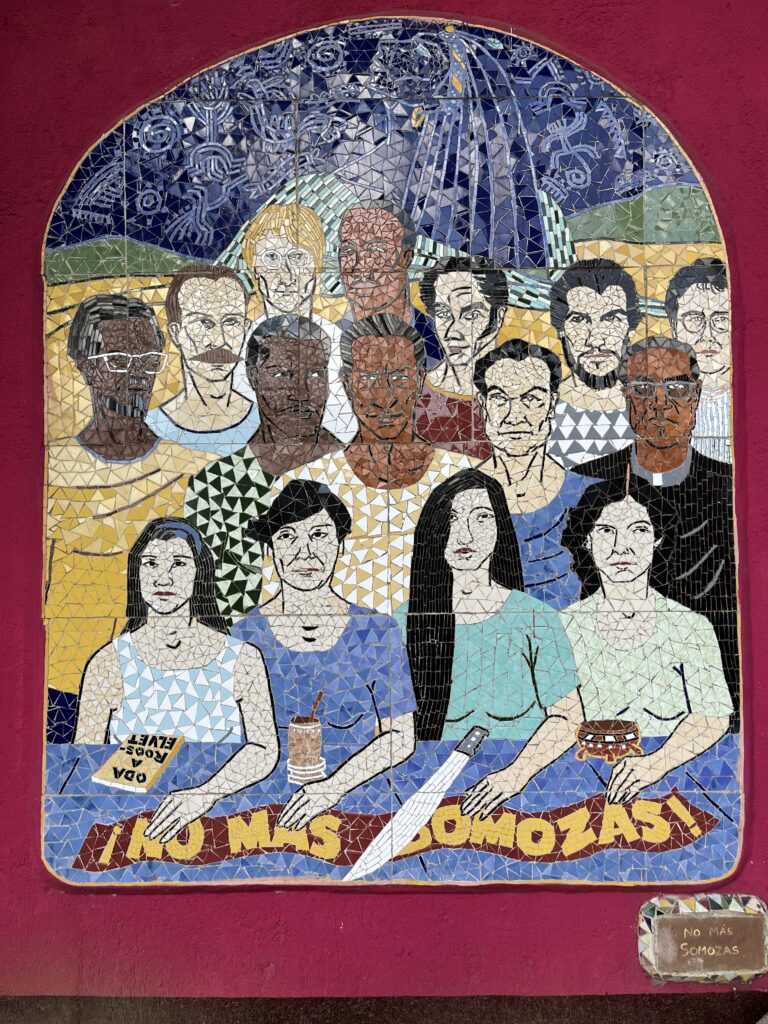
This piece, which was at the Myths and Legends Museum in Léon, highlights figures that are considered important to the revolution that overthrew the Somoza dictatorship. On the bottom left is a book titled “Oda a Roosevelt” which translates to “To Roosevelt” this poem was written by Rubén Darío in 1904. It addresses the way the American government was acting after the Spanish lost the Spanish-American war its imperialism and control over the whole region. It was likely included when this mosaic was created mostly in reference to the Contra affair.
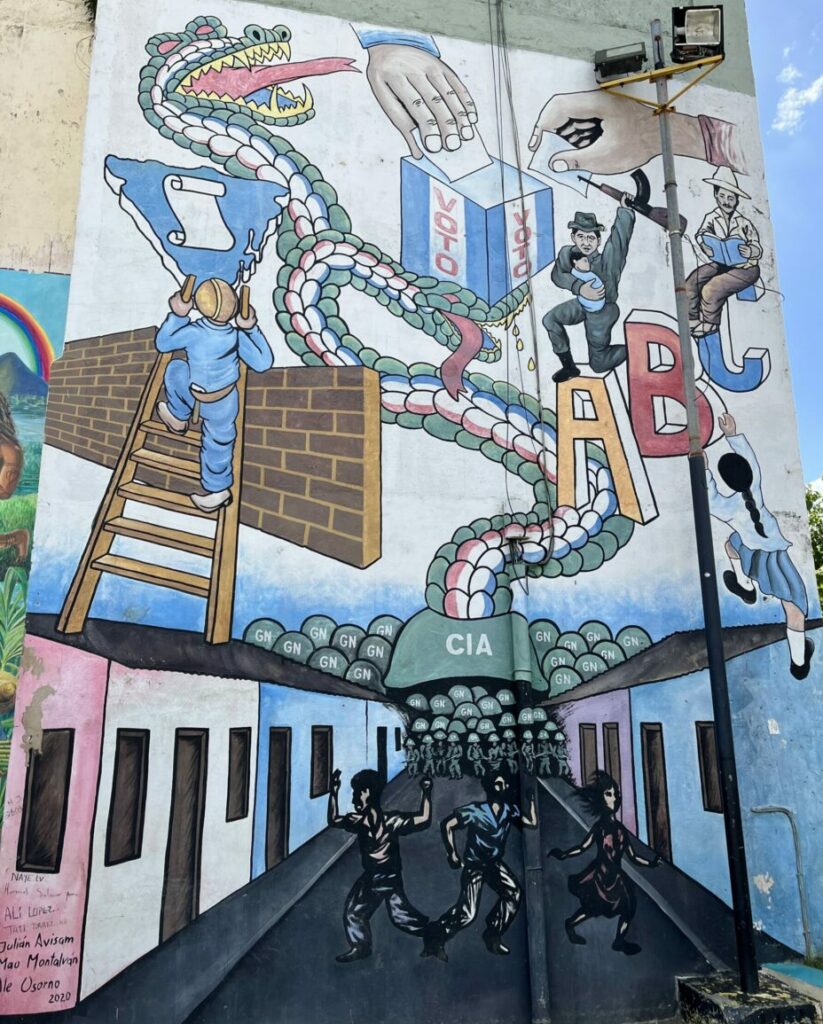
This piece was the oldest we saw and was created in the 80s during or after the revolution. I found this to be especially interesting given the fact that it was from closer to the revolution. CIA is listed at the very center as playing a central part in the war, the “future invader”. The smaller helmets represent the National Guard, the forces the Sandinistas were fighting against. Combined they are a dragon that is trying to stop voting, literacy, and what I interpret as other national improvements.

This last piece depicts when the National Guard killed four college students during a protest. You could see the location where it took place from where I stood taking the photo. The horrible irony of it was we saw this after learning about the 2018 protests, in which the current government killed protesters. The same government that likely commissioned these pieces.
All these pieces of art tell us something about the past and the history of Nicaragua. They also tell us something about the present, and also the future.
Read the rest of the BWAP Nicaragua 2024 reflections:
Rev. Mark Elsdon ~ Why Nicaragua?
Jack Wilharm ~ The Power of Microfinancing
Mei Hippe ~ Perfect Solutions?
Nathan Tan ~ Politics and Faith
Aurora Kuelbs ~ Opportunity
Allyson Mills ~ Grace and Power Under Dictatorship
Will Clancy ~ Politics of Faith
Sophie Elsdon ~ Nicaraguan Pride

